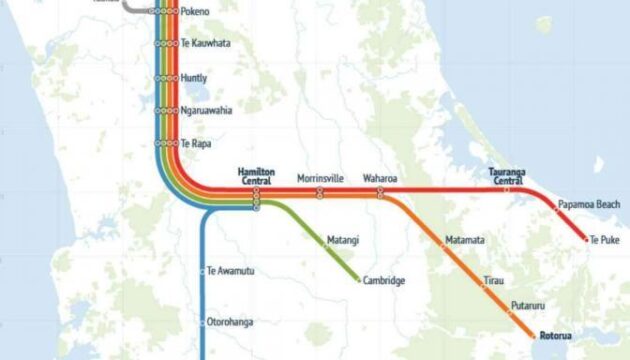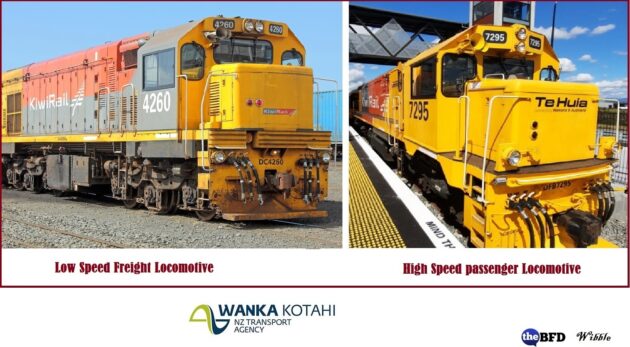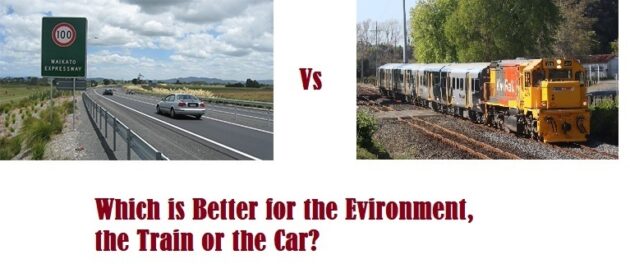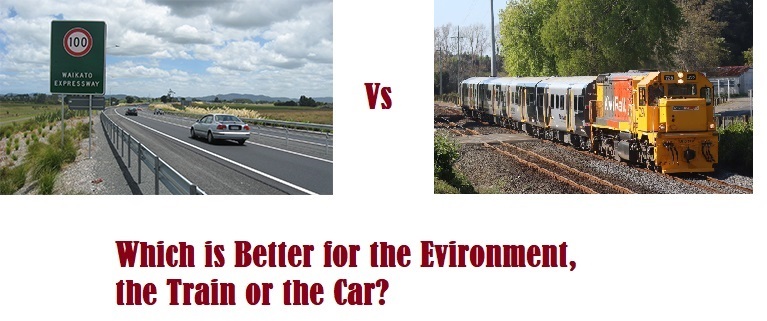Our government has a policy that they are not investing in new roads much anymore because they want people to switch to public transport, walking or cycling instead. This is part of their stated intent to obey the dictates of the IPCC and reduce our CO2 emissions.
Prior to the 2017 election, this government promised that, if elected, it would build a high-speed train from Auckland to Hamilton, Tauranga, Te Puke, Rotorua, Otorohanga and Cambridge within one year costing a grand total of $20 million.

Well, we didn’t exactly get that high-speed train going to all of those destinations in one year, but what we got instead four years later was a repainted diesel locomotive attached to some rusted old 1970s carriages.
They were rescued from the knacker’s yard and spruced up with some paint and a bit of lipstick and travel only from Frankton in Hamilton to Papakura in South Auckland, from which you can then disembark and catch another train to Britomart station in central Auckland.
It is slow speed (3.2 hours total, average speed 40km/h) and only covers a tiny part of the promised track mileage, and yet it cost 5 times the promised amount – $98 million. Now that’s a lot of lipstick!
Although the train can carry 150 passengers, it has been typically carrying around 25 passengers per trip. The train is named Te Huia after an extinct bird, which seems strangely appropriate.

One of the other key goals of the government’s climate change plan is to eliminate fossil fuels, and that is why they immediately stopped any further exploration of fuel and gas from Taranaki. It’s probably also why the train is powered by diesel. Wait, what? Isn’t that a fossil fuel too you ask? How Dare You!
For the climate-change illiterate, the way this works is that if you label something “public transport” then magically a filthy big diesel locomotive belching out toxic diesel fumes becomes a clean, green, and environmentally friendly machine and we simply don’t mention the whole fuel or fumes part. Simple really.
Much has been written about people’s frustrations over the train’s low speed and awkward resulting travel schedule, but what about the environment? After all, that is the supposed reason that we have this train so surely we all need to just suck it up and stop using our cars for the greater good? Well, that is the mantra, but is the train really better for the environment than using the car?
The government tells us that this is a no-brainer and that the answer is a resounding yes. Then again, this government has also increased the country’s CO2 emissions by around 20% since it has been in office, while attempting to decrease them. So let’s put this one to the test.

Based on the typical number of people that have been using the train per weekday (around 25) and comparing the equivalent number of cars (based on national average vehicle occupancy of 1.2, hence 21 cars would replace one train) the fuel use and CO2 to travel from Hamilton to Auckland (one-way) become:
- Total Fuel used (train): 2,816 litres
- Total Fuel used (cars): 252 litres
- Fuel used per person (train): 113 litres
- Fuel used per person (car): 10 litres
- CO2 emissions* per person (train): 306 kg
- CO2 emissions* per person (car): 25 kg
*(CO2 emissions based on NZ government data)
As we see, the train uses over 11 times the fuel and creates over 12 times as much carbon dioxide per person than if you had used a car instead. Boy, trains are really, really bad for the environment.
To head off the laughter that this whole Te Huia debacle has created, the government has already been trying to tell us that passenger numbers will rise, even as they are actually dropping fast. They will no doubt try to say, “but if more people used it, then the train would be better than cars.” So let’s look at what would happen if the train was running at its capacity of 150 passengers. In that case, the train would still consume just under double the fuel of those people using their car, and would still generate over double the amount of carbon dioxide per person. It is just not possible for the train to be more environmentally friendly than the car, not by a country mile.
If you want to put this into perspective, consider this. The train has a total weight of 228 tonnes, and burns over 2,800 litres of fuel during that trip, whereas the equivalent number of cars (21) weigh only around 32 tonnes and burn a combined total of just 250 litres of fuel. Boy, aren’t those facts just so annoying?
These figures include the fact that the train carries a baggage car in addition to its four carriages. Even though the Minister of Transport in his infinite wisdom has attacked Kiwirail and said that the baggage car is pointless and should be removed to save weight, perhaps he should have checked with Kiwirail before he abused them, and he would have found out that the baggage car is there because it contains the vital 600 horsepower diesel generator required to power all of the electrical systems of the train including the lights, air-conditioning, the kitchen, wifi etc. Again, all very environmentally unfriendly. Hey Mr Wood, why not check with Kiwirail before shooting your mouth off?
This comparison does not include all of the additional travel costs associated with travelling to and from the train stations at each end of the trip. The car takes you from home to work, whereas the train does not. Once those additional travel costs and emissions are added in, the train becomes even more of a dead duck environmentally, albeit a dead duck with some nice very expensive lippy and a bit of Chanel No.5 on.
The above comparison also looks only at CO2 emissions, and not things like Nitrous Oxide and the other carcinogenic emissions that the train produces, but cars do not. It just goes downhill further and further for the train once you include all of those things. Isn’t it amazing that our government has never bothered to do any of these calculations?
Now if you are still wondering why the government named this train after an extinct bird, maybe it might help to go on YouTube and play the old Monty Python parrot sketch. To paraphrase: “the only reason that bird (Te Huia) is still standing there is because you nailed it there (with huge subsidies), it couldn’t stand up on its own otherwise, it’s dead as a dodo”. The government’s response when it also eventually closes the line will also be inevitably pythonish: “would you like a fish instead then?”
Please share so others can discover The BFD.

